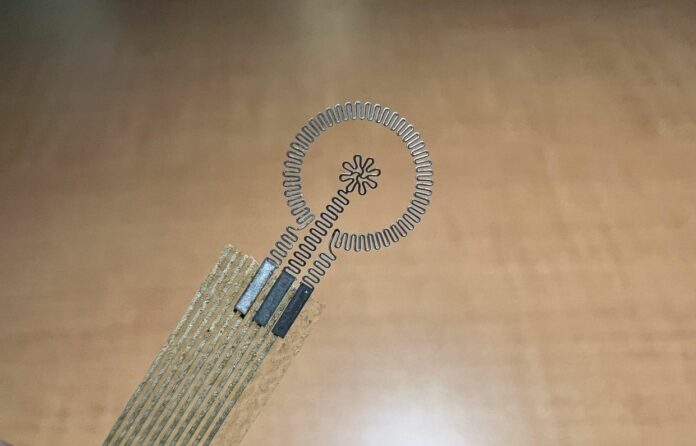Diabetes affects almost 30 million individuals in the United States, and 15 to 25 percent of this population develops a diabetic foot ulcer at some time in their life.
Since diabetes may induce nerve damage leading to numbness, diabetics may encounter a simple blister or minor cut that goes undiagnosed.
Since high glucose levels also make the walls of capillaries thicker, blood flow slows down. This makes it harder for these wounds to heal. The conditions are ideal for a minor cut to become a serious one.
When a person sustains a wound, the objective is always to seal it as soon as feasible. Otherwise, infection might spread to an open wound. Moreover, infections are riskier and more difficult to cure in diabetics. There is a critical unmet demand for these patients’ cost-efficient, effective remedies.
This “new bandage is cost-effective, easy to apply, adaptable, comfortable and efficient at closing wounds to prevent infections and further complications,” points out co-author Guillermo A. Ameer.
“Although it’s an electronic device, the active components that interface with the wound bed are entirely resorbable,” adds co-author John A. Rogers. “As such, the materials disappear naturally after the healing process is complete, thereby avoiding any damage to the tissue that could otherwise be caused by physical extraction.”
Ameer says that injuries can mess up the normal electrical signals in the body. It attracts new cells to move to the wound bed by electrically stimulating the body to reestablish normal signaling.
As our body depends on electrical impulses to operate, the team “tried to restore or promote a more normal electrical environment across the wound. We observed that cells rapidly migrated into the wound and regenerated skin tissue in the area. The new skin tissue included new blood vessels, and inflammation was subdued.”
Traditionally, therapists have used electrotherapy for therapeutic purposes. Most of this equipment, though, is wired and big, so it can only be used in a hospital with a doctor there to observe. Ameer collaborated with Rogers, a pioneer in bioelectronics who originally proposed the idea of bioresorbable electronic medicine in 2018 to create a more comfortable device that could be worn continuously at home.
The little, flexible bandage that gently envelops the injured site was eventually created by the two researchers and their teams. Two electrodes are located on one side of the smart regeneration system: one is a small flower-shaped electrode that rests directly on the wound bed, and the other is a ring-shaped electrode that rests on healthy tissue and encircles the whole wound. On the other side of the device is a coil for collecting energy to power the system and a near-field communication (NFC) system for sending data wirelessly in real time.
Also, the group used sensors that could judge how effectively the wound was healing. Physicians may track development by measuring the electrical current’s resistance across the wound. Direct correlation exists between a steady decline in current measurement and the healing process. So, if the current continues elevated, doctors know something is wrong.
By adding these features, the device can be controlled from a distance without wires. A doctor may monitor the wound’s healing process and choose when to provide electrical stimulation from a distance.
“As a wound tries to heal, it produces a moist environment,” explains Ameer. “Then, as it heals, it should dry up. Moisture alters the current, so we are able to detect that by tracking electrical resistance in the wound. Then, we can collect that information and transmit it wirelessly. With wound care management, we ideally want the wound to close within a month. If it takes longer, that delay can raise concerns.”
In a model trial with tiny animals, researchers used electrical stimulation for just 30 minutes every day. Even in this short amount of time, the closing went 30% faster.
The flower-shaped electrode dissolves into the body after the wound has healed, avoiding the need to remove it. The electrodes were created using molybdenum, a metal commonly utilized in electrical and semiconductor applications. They found that molybdenum can biodegrade if it is thin enough. Also, it does not obstruct the healing process.
The use of molybdenum as a biodegradable electrode for wound healing has never been shown before, according to Ameer.
“After about six months, most of it was gone. And we found there’s very little accumulation in the organs. Nothing out of the ordinary. But the amount of metal we use to make these electrodes is so minimal, we don’t expect it to cause any major issues.”
The team’s next step is to test its bandage on a bigger animal model for diabetic ulcers. They then want to test it on people. The bandage encounters less regulatory challenges since it uses the body’s natural ability to heal itself without releasing medications or biologics. This implies it might possibly be available to patients much sooner.
Source: 10.1126/sciadv.ade4687
Image Credit: Northwestern University
